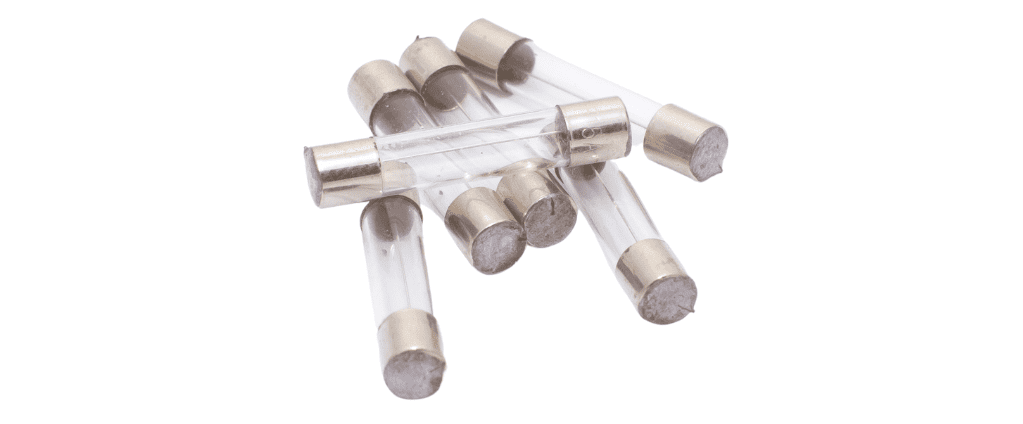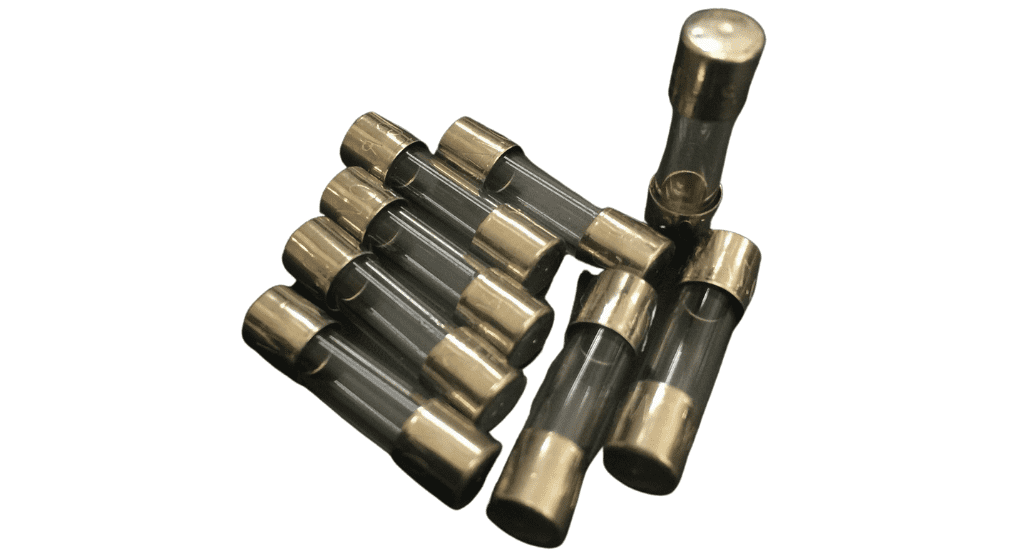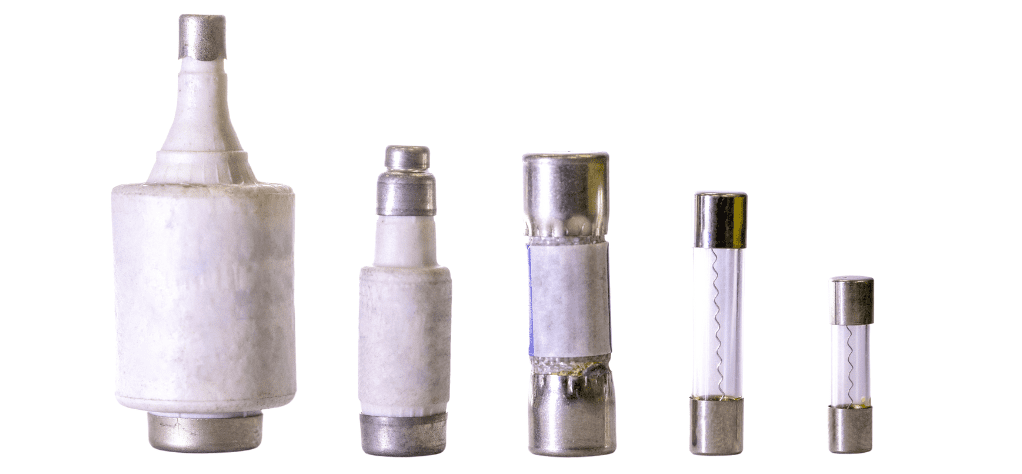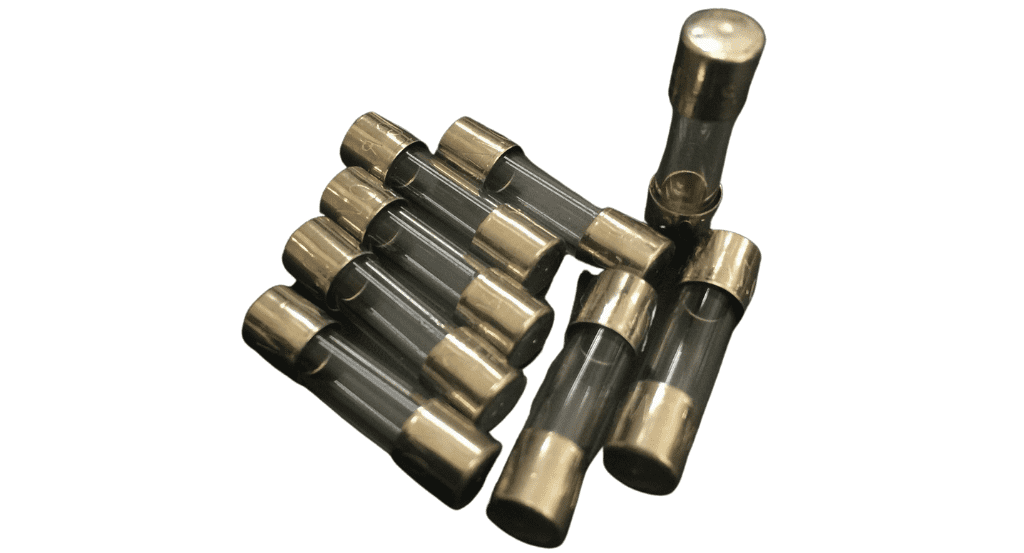
What is an electrical fuse and how does it work?
Content
Many electrical components in your home owe their safety to the fuse.
Whenever you experience huge power surges but still find that your extension socket hasn't burned to the ground, the fuse, if used, is the component that makes sure that's the case.
What is a fuse and how does it work?
Our guide attempts to answer these questions today as we present everything you need to know about one, including the different types and how a fuse differs from a circuit breaker.
Let's get down to business.
What is a fuse?
An electrical fuse is a small device with a thin strip of conductor that protects homes and electrical appliances from excessive power surges. This is an electrical protective device that cuts off power to an instrument or electrical system when the current flowing exceeds the recommended value.

Electricity is not just an element that poses an electric shock hazard to us. Just as humans have a maximum amount of voltage that can pass through the body without any fatalities, your electrical appliances and systems usually have their own current and voltage ratings.
When the power supply exceeds these limits, your electrical systems are dealt a fatal blow. In homes and businesses, this means spending a lot of money repairing or even replacing expensive devices and appliances.
Sometimes such a surge, when there is no protection, can even cause a fire and be very dangerous for a person. To protect against the adverse effects of overcurrent, a fuse comes into play.
What does a fuse do?
To protect against power surges, a thin conductive strip in the fuse melts and breaks the circuit. Thus, the flow of electricity to other components in the circuit is interrupted and these components are saved from burning. The fuse is used as a victim for overcurrent protection.

A thin conductor is an inner wire or element made of zinc, copper, or aluminum, as well as other predictable metals.
The fuse is installed in series in the circuit so that all current flows through it. In the fuse itself, the wires are installed between two terminals and contact the terminals at both ends.
In addition to blown due to excess power supply, fuses also blow when there is a short circuit or ground fault.
A ground fault occurs when there is a foreign conductor in the circuit that serves as an alternate ground.
This short circuit can be caused by a human hand or any metal object that comes into contact with a live wire. An electrical fuse designed for this also blows or melts.
Finding out if a fuse has blown is relatively easy. You can visually inspect transparent types to see if the wire is broken, melted, or burned.
You can also use a multimeter to check fuse continuity. This is the most accurate diagnostic method.
Characteristics of electrical fuses
Fuses come in different designs and with different ratings. The fuse rating is the maximum amount of current or voltage that can pass through its thin metal wire before it melts.
This rating is typically 10% lower than the rating of the device that the fuse is protecting, so protection is adequate.
A fuse can also have different breaking capacity and different operating times depending on the type of fuse.

current rating
The rated current is the maximum current that the fuse is rated for. Any slight excess of this rating leads to burnout of the wire.
However, this rating is always used in conjunction with the voltage rating and trip time rating, which depend on the circuit in which the fuse is used.
Voltage level
Like the current rating, the voltage rating of a fuse is the maximum voltage that the metal strip can handle. However, when determining this rating, it is usually set above the supply voltage from the source.
This is especially important when there are several devices in the electrical system using the same rated current but different rated voltages. The rated voltage is usually set to the maximum safe voltage.
Because of this, medium voltage varieties are not used in low voltage circuits or systems to provide reliable component protection.
Response time
The fuse time is the delay before the metal strip burns out. This response time is closely related to the current rating in order to provide the most adequate protection.
For example, standard fuses require a power source twice their rating to blow in one second, while fast blow fuses with the same rating and power can blow in 0.1 seconds. A time lag fuse cuts off power after more than 10 seconds.
The choice of them depends on the sensitivity and characteristics of the protected device.
Fast-acting fuses are used in applications with components that are very sensitive to the slightest current surges, while slow-acting or delayed-blow fuses are used in motors where components typically draw more current than usual for a few seconds.
Breaking power
The fuse breaking capacity is the rating used in the high breaking capacity (HRC) versions. HRC fuses allow overcurrent to pass for some time with the expectation that it will decrease. They then break or melt if this contraction does not occur.
You may have guessed correctly that this is specific to time delay types and the break point is simply the maximum current allowed during this short delay time.
When the rated delay time is not reached, but the tensile strength is exceeded, the fuse blows or melts. This is a kind of double protection. In this regard, HRC fuses can also be referred to as high breaking capacity (HBC) fuses.
There are also high voltage HRC fuses used in high voltage electrical circuits and low voltage HRC fuses used in low voltage distribution systems. These low voltage HRC fuses are usually larger than conventional fuses.
Fuse design
In general, the fuse rating determines its strength and design. For example, in high power fuses you may find several strips or metal wires, while some other fuses use steel rods to support the strip from warping.
Some use materials to control the splitting of metal, and you'll also find ribbon wires made to look like springs to speed up the splitting process.
History of the Fuse
The history of the fuse dates back to 1864. It was then that Breguet proposed using a conductive device on the site to protect the telegraph stations from lightning strikes. Then, for this purpose, many conductive wires were created that worked exactly like a fuse.
However, it wasn't until 1890 that Thomas Edison patented the use of a fuse in electrical distribution systems to protect homes from these huge current surges.

What are the types of fuses?
Generally, there are two categories of fuses. These are AC fuses and DC fuses. It is not difficult to understand the difference between the two.
AC fuses just work with AC while DC fuses work with DC. However, one significant difference between the two is that you may find that DC fuses are slightly larger than AC fuses.
Now these two categories of fuses are divided into low voltage fuses and high voltage fuses. The more specific fuse options are then sorted into these two groups.
Low voltage fuses
Low voltage fuses are fuses operating at a low voltage rating. They can be divided into five types; cartridge fuses, plug-in fuses, impact fuses, changeover fuses and pull-out fuses.
- Replaceable electrical fuses. Replaceable fuses are widely used in power distribution systems in homes and offices. These are usually porcelain coated fuses with a handle that work with the base of the fuse. They also have two blade terminals for receiving and discharging electricity in the circuit, just like a conventional fuse design.
Demountable fuses are used in home and office environments due to the ease of connecting and removing them from the base.
- Cartridge fuses: These are fuses with all components completely enclosed in a container, with only the circuit terminals exposed. Cartridge fuses come in many shapes and have a variety of applications.
D-type cartridge fuses are bottle-shaped and are most commonly found in small appliances. They are usually placed in a ceramic case with metal ends to conduct electricity.
Fuses are low voltage HRC fuses, while blade fuses can be easily replaced, as can reconnectable fuses, but are covered in plastic instead. Blade fuses are commonly used in automobiles.
- Electrical striker fuses: The striker fuse does not use a thin melting strip. Instead, it ejects a contact pin to break the circuit and also serves as an external visual cue to determine if a fuse has blown.
- Switching fuses: These are fuses used in low voltage systems with external switches that can be used to close or open the current path.
- Drop-down fuses: Drop-down fuses eject a molten strip from below and are commonly found in low voltage transformer suspension systems.
High voltage fuses
High voltage fuses come in different variations. There are HRC liquid high voltage fuses that use liquids to quench the arc.
We also have push-out fuses that use boric acid to interrupt the process, and cartridge type HRC fuses that work the same as their low voltage counterparts.
Where should fuses be used?
Fuses are commonly used in small and large AC systems with transformers. High voltage fuses with high current rating are used in power system transformers operating up to 115,000 volts.
Low and medium voltage fuses are used to protect small electrical transformer systems. These include, among others, systems in televisions, refrigerators and computers.
Also, whether or not it is possible to install a fuse anywhere in the circuit, it is best to install it at the beginning of the system. That's why you see fuses mounted on appliance plugs or on the front of a transformer's primary connection point.
What are fuse blocks?
Fuse boxes are hubs in electrical systems that house multiple fuses that protect different parts of your home or office. They serve as the default form of surge protection if one of your devices is not equipped with an internal fuse.
You will usually see fuse boxes called switch panels or junction boxes, but they all perform the same function. They hold six to twelve individually rated fuses.
Although the old residential fuse boxes were only rated at 60 amps, today we see fuse boxes with a total rating of 200 amps. This is the sum of the ratings of all the individual fuses in the box.
Now, fuse boxes are often confused with circuit breaker boxes.
The difference between fuses with circuit breakers
Circuit breakers perform the same function as electrical fuses; they protect household appliances from power surges by blocking the circuit. However, how the two devices do this is different.
Instead of having a melted or extruded strip, circuit breakers work with internal contacts and external switches. The internal contacts normally complete the circuit, but are displaced in the presence of overcurrent. External control of the circuit breaker helps to put the contacts and the circuit breaker into a protective state.
From this you can see that while fuses are always replaced when they blow, circuit breakers can be used over and over again. You just need to reset them. The circuit breaker boxes then include many of these switches rather than fuses.
When to replace the fuse
A fuse can last a lifetime if installed on recommended power systems and there are no power surges. This is the same when it is not installed in a wet or damp environment where it is prone to corrosion.
However, you should always change fuses after 20-30 years of use. This is their normal lifespan.
Guide Video
Conclusion
Using appliances without an electrical fuse or having a home without an electrical fuse box is a harbinger of electrical and fire disasters. Always make sure that the correct fuse is installed in electrical systems or circuits, and be sure to replace it if it is blown.
F.A.Q.
What is a fuse used for?
A fuse is used to protect circuits from power surges or ground faults. It has an internal metal strip that breaks or burns to cut the current path and cut off the power supply.
Does the fuse reduce current?
Only current-limiting fuses reduce the supply of current when a power surge occurs in the circuit. Others do not reduce the current in the circuits, but completely prevent it from flowing.

